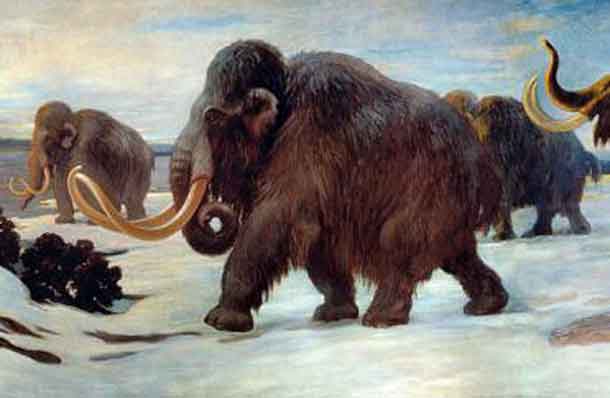
THUNDER BAY – CLIMATE – Dwindling populations created a “mutational meltdown” in the genomes of the last wooly mammoths, which had survived on an isolated island until a few thousand years ago according to the latest research prepared by Rebekah Rogers and Montgomery Slatkin of the University of California, Berkeley.
Woolly mammoths were one of the most common large herbivores in North America, Siberia, and Beringia until a warming climate and human hunters led to their extinction on the mainland about 10,000 years ago. Small island populations persisted until about 3,700 years ago before the species finally disappeared. Researchers compared existing genomes from a mainland mammoth that dates back to 45,000 years ago, when the animal was plentiful, to one that lived about 4,300 years ago. The recent genome came from a mammoth that had lived in a group of about 300 animals on Wrangel Island in the Arctic Ocean. The analysis showed that the island mammoth had accumulated multiple harmful mutations in its genome, which interfered with gene functions. The animals had lost many olfactory receptors, which detect odors, as well as urinary proteins, which can impact social status and mate choice. The genome also revealed that the island mammoth had specific mutations that likely created an unusual translucent satin coat.
The comparison gives researchers the rare opportunity to see what happens to the genome as a population declines, and supports existing theories of genome deterioration stemming from small population sizes. The study also offers a warning to conservationists: preserving a small group of isolated animals is not sufficient to stop negative effects of inbreeding and genomic meltdown. For those interested in wooly mammoth “de-extinction,” the study demonstrates that some mammoth genomes carry an overabundance of negative mutations.
The mammoth genome analysis was also a great project to do with Monty Slatkin. He has spent his career developing mathematical models of how genomes will look different when population conditions change. With only two specimens to look at, these mathematical models were important to show that the differences between the two mammoths are too extreme to be explained by other factors.”


